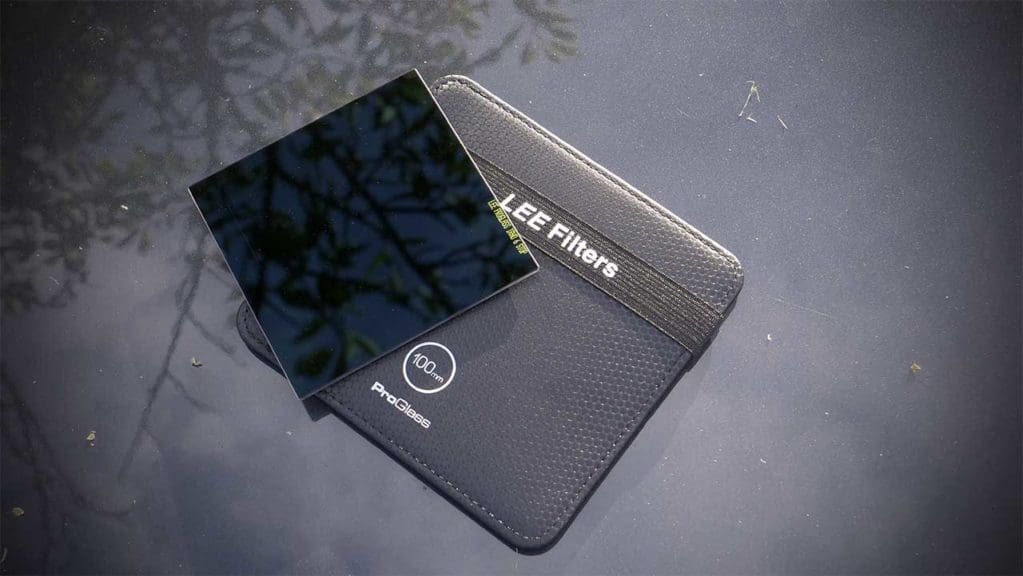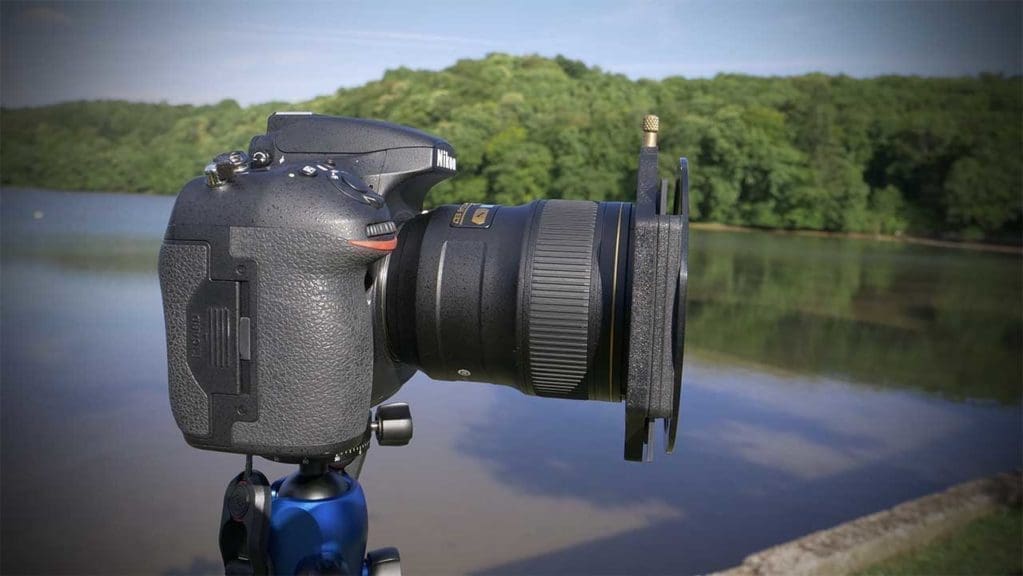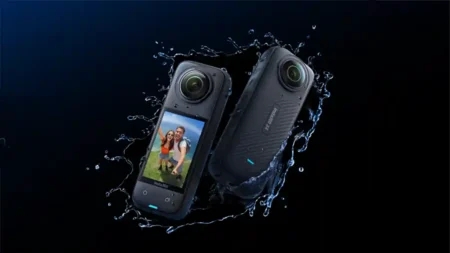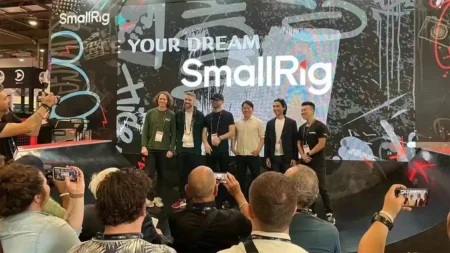In Summary
Lee Filters ProGlass IRND are a range of neutral density filters (ND) with values ranging from 0.6ND through to 4.5ND available for the Seven5, 100mm and SW-150 filters systems. The IRND coatings are designed to extend photographic exposure times and cut infrared and ultraviolet light leading to neutral colour casts and clear and crisp images.
Formed in 1967 Lee Filters has a 50 year history of supplying pro photographers with premium quality glass filters.
Time and technology might have changed, but Lee Filters are still as relevant as ever, there’s no faking or mimicking the effect of a good filter fronting your lens.
Despite Lee’s popularity the company remains small and specialist, based in the small Wiltshire town of Andover in the UK, where quality is at the heart of the product line.
This quality is more evident than ever when you look at the company’s latest release the ProGlass IRND series, we’ve taken a look at the ProGlass IRND 1.8ND (6 stop).
Neutral Density (ND) filters are a staple of many landscape photographers kit bags, and while this type of filter has obvious benefits, helping to extend exposure times, the images can often be affected by unwanted colour casts.
A few years ago Lee launched the Big Stopper, a filter quite unlike any Neutral Density that had come before, with a huge 10 stops of exposure extension, this was quickly followed by the Little Stopper with 5 stops.
These two filters are exceptionally useful and although both suffer from slight colour cast issues, these casts are easy to correct.
Now after two years of development Lee Filters have announced a new range of six ProGlass IRND filters. This range spans from 0.6ND (2 stops) all the way through 4.5ND (15 stops) of exposure extension.
As ever, as these are Lee filters we expect nothing but exceptional quality.
Lee Filters ProGlass IRND Features

Any photographic filter is far from a simple sheet of glass, as anything less than the highest grade optical quality material and coatings would have a disastrous effect on your images outcome. Yet somehow Lee manages to pack in a surprising number of small additions that help to elevate the filters above much of the competition.
Starting with the glass itself, this is optically flat and measures two millimetres in thickness. This means that it’s completely compatible with all three sizes of filter systems that Lee produces. That’s the Sev5n, 100mm and SW-150.
The filter arrives in a new style of case and this is one up from the traditional canvas Velcro cases that previous LEE Filters arrive in. These cases did see a slight update a few years ago for some filters with the launch of the big stopper when the filters started to arrive in little tins.
These tins help to keep the filter nice and safe, and at the time were a nice touch. A few years on and I must say that my tin is looking a pretty battered but to be honest it still keeping the filter good and safe.
Now, however, Lee have really stepped up the style and design. The new case is made from a tough Leatherette style of material and is beautifully finished. This semi hard case is marked on the exterior clearly showing the contents and filter system size.
To help stop the filter from just dropping out there’s a magnetic clasp inside that holds the opening closed and for extra security an elasticated bands fits snugly around the case as well.
This slimmer design is far more practical than the traditional style of Lee filter casing as it enables quick and easy extraction of the filter when you’re out in the field, and in the test easily fitted into any large pocket on most of my bags.
As always each filter is marked with the model, so there’s no worries about mixing them up if you have several.
As this is an ND Filter long exposures during the height of the day’s sun can lead to light leak. To help prevent this on the back of the filter is a very thin foam pad that creates a light seal when slotted into the filter holder.
For something as simple as a glass filter Lee really have managed to add all those small extra touches that count when it comes to boosting this ND above others. Of course all these extra touches will amount to nothing if the end results don’t show the quality and produce images that lack contrast, colour, clarity and cause a huge shift in the colour cast.
ND filters can be especially susceptible to the effects of infrared and ultraviolet light, in the development of this new filter Lee has made sure that the light at both ends of the spectrum are blocked and this should help to produce images with colours that are crisper and more punchy than those captured through other ND filters.
Lee Filters ProGlass IRND Handling
Whatever size IRND you use, Sev5n, 100mm or SW-150, the Lee filter holder through all systems is much the same. Attaching the filter to your lens is extremely simple, screw on a threaded adapter to the front of your lens and then the Lee Filter Holder is simply clamped on. The holder features a simple sprung quick release mechanism which means that the filter holder can be quickly added and removed as needed.
Once the filter holder is in place the filter can be slotted directly into the holder. The holder itself is modular so can be adjusted for thickness of glass with spacers as needed. As with most square filter systems the holder needs to be purchased separately from the filter itself.
Our 1.8ND (6 stop filter), measures 100mm x 100mm x 2mm thick which is the standard size for this type of filter from Lee so if you do have other Lee Filters and you’ve adjusted your holder to fit, then no other adjustments to slot sizes should be needed.
The small foam pad on the surface of the filter helps to provide a tight seal between the holder and the filter preventing any light leak, checking through the images I shot even in brighter conditions there was no sign of any issue.
I used the filter during the early evening when the light was low as well as during the midday sun, and as ever using the mount system for the Lee filter was easy. As the thickness of the filter is similar to all of the LEE Filters it slotted nicely into the holder without issue.
When using the filter especially in lower light your cameras AF system can be affected, not really a surprise when you consider there’s a 6 stop exposure reduction. This is where the Lee filter system really comes into it’s own enabling you to quickly detached the holder, focus, switch the lens to manual focus then reattach the filter ready to take the shot.
Lee Filters ProGlass IRND Verdict
The new ProGlass IRND filters are certainly impressive and the range of densities available is far greater than any other range of ND filters that I’ve used before.

In our test, I just looked at the 1.8ND (6 stop) option and the quality of this was excellent. As ever the filter fitted into the mounting system perfectly and the new sleeve that helps protect the filter looked great and did its primary job of protection. However the new design also made it far easier to access the filter than the previous designs, cutting out faff time when extracting the filter that you want to use, and best of all it slipped perfectly into the front pocket of a Billingham Hadley One.
The foam pad around the filter that helps to prevent light leak is a nice touch and used in bright daylight certainly did the job it’s been designed to do.
Of course, all this is dressing and the real point of this filter is to stop down exposure times enabling longer than normal shutter speeds even in bright conditions.
To this length, the filter handled as you’d expect extending shutter speeds from 1/250 to ¼ of a second, but then this isn’t the only filter on the market with this ability, what Lee is known for is optical quality.
Looking at the images shot and sure enough the filter is true to Lee’s claim of producing a minimal colour cast. Colours come through naturally and the colour is clear and crisp.
Setting the camera to custom white balance and comparing an image with and without, you can see the difference and cast, all be it very slight, that has been caused by the filter.
This filter is good even by Lee standards, but as ever there is an issue, the price. At £179 for the 100mm, that’s well over £50 more than the closest rivals from Formatt HiTech and Bowers & Wilkins.
Even then these two filters are expensive and almost £100 more than cheaper alternatives. However, when it comes to this amount of exposure reduction there are no short cuts or cheap alternatives if you take your image capture seriously.
Lee filters are pro filters, there really is no avoiding it and with that pro label as well as being the markets most desirable and leading brand you pay a premium. Now I’ve tested the 1.8ND I’d also like the 0.6, 0.9, 1.2, 3 and 4.5 but that’s going to set me back £895, oh well something to aspire to I suppose!



